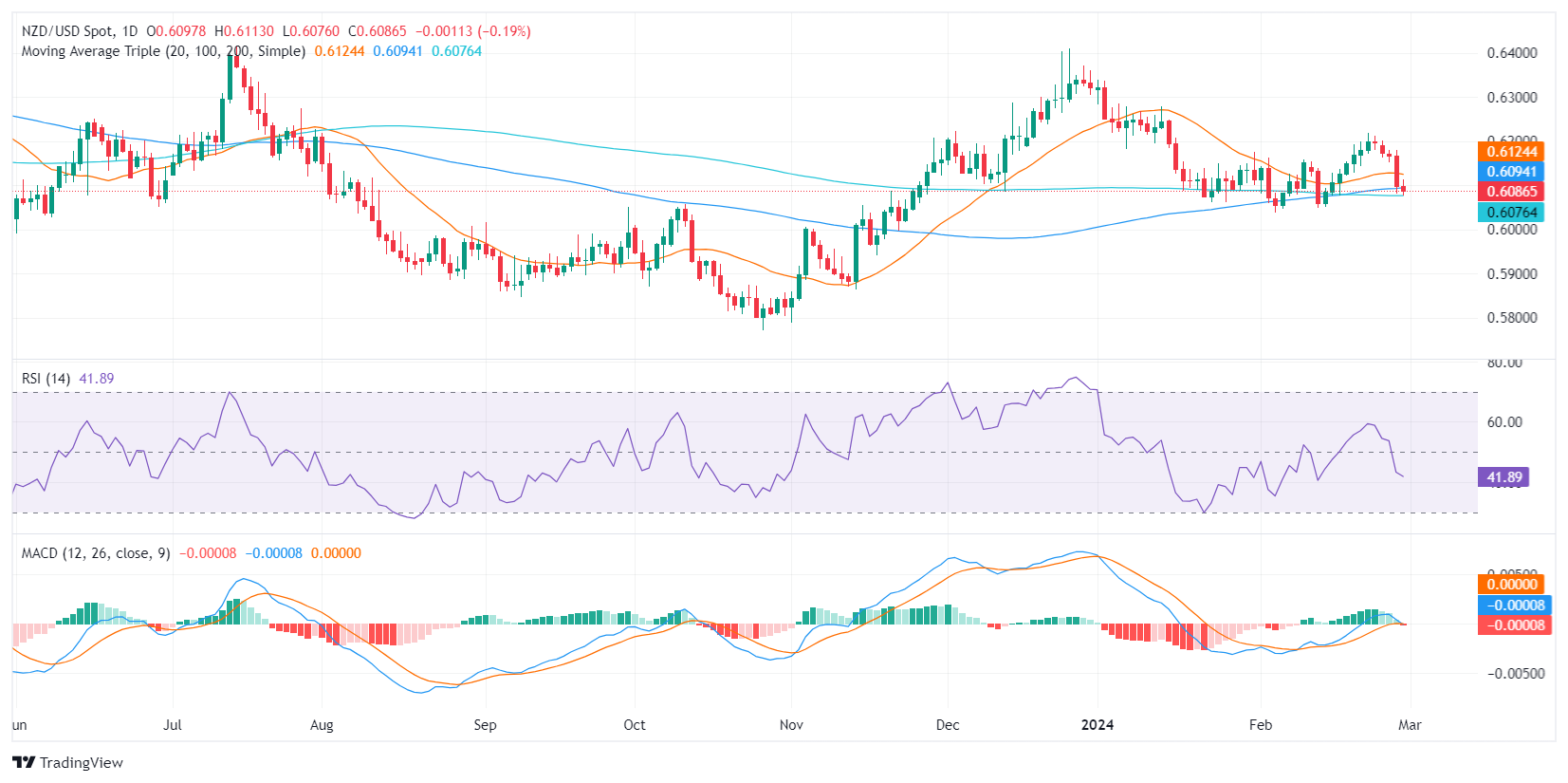NZD/USD tallies a losing day, hawkish bets on the Fed cushions the USD
- The NZD/USD traded at around 0.6085 with 0.25% losses in Thursday's session.
- US inflation rate, gauged by the Core PCE Price Index fell in January, matching expectations.
- Following RBNZ’s dovish hold, if the market keeps delaying rate cuts of the Fed, more downside may be incoming.
The NZD/USD pair is currently trading at 0.6085, reflecting a 0.25% decline in Thursday’s session. Data-wise, US Personal Consumption Expenditures (PCE) showed no surprises, but markets are aligning with the Federal Reserve’s (Fed) forecast of 75 bps of easing in 2024, which is benefiting the USD.
On Thursday, the US Bureau of Economic Analysis reported that the annual inflation rate in the US, measured by the change in the Personal Consumption Expenditures (PCE) Price Index, rose by 2.4% in January, decelerating from 2.6% in December, which was in line with what markets had anticipated. The index experienced a monthly uptick of 0.3%, exactly as expected. When excluding the fluctuating sectors of food and energy, the Core PCE Price Index rose by 2.8% year-over-year, aligning with the consensus.
Regarding expectations, markets seem to have given up the hopes of a cut from the Fed in March or May and instead pushed the start of the easing cycle in June, which seems to be pushing the pair down.
NZD/USD technical analysis
On the daily chart, the Relative Strength Index (RSI) on the NZD/USD shows an overall declining trend, transitioning from the positive territory to the negative territory. This indicates a shift from bullish to bearish momentum, demonstrating a power change from buyers to sellers. This is also supported by the decreasing green bars in the Moving Average Convergence Divergence (MACD) histogram, suggesting a deceleration in positive momentum.
In terms of the broader trend, despite the pair trading below the 20 and 100-day Simple Moving Averages (SMAs), it remains above the 200-day SMA. This indicates that while there is short-term bearish pressure, the long-term uptrend hasn't been completely overruled.
